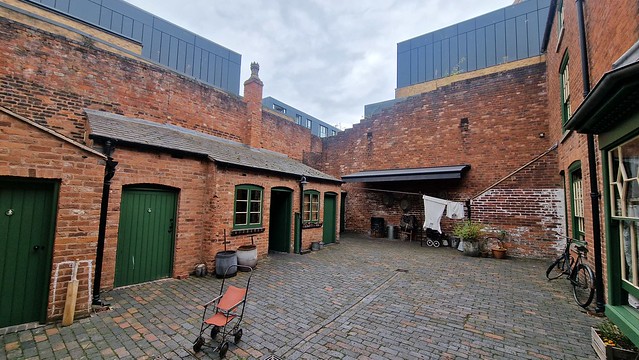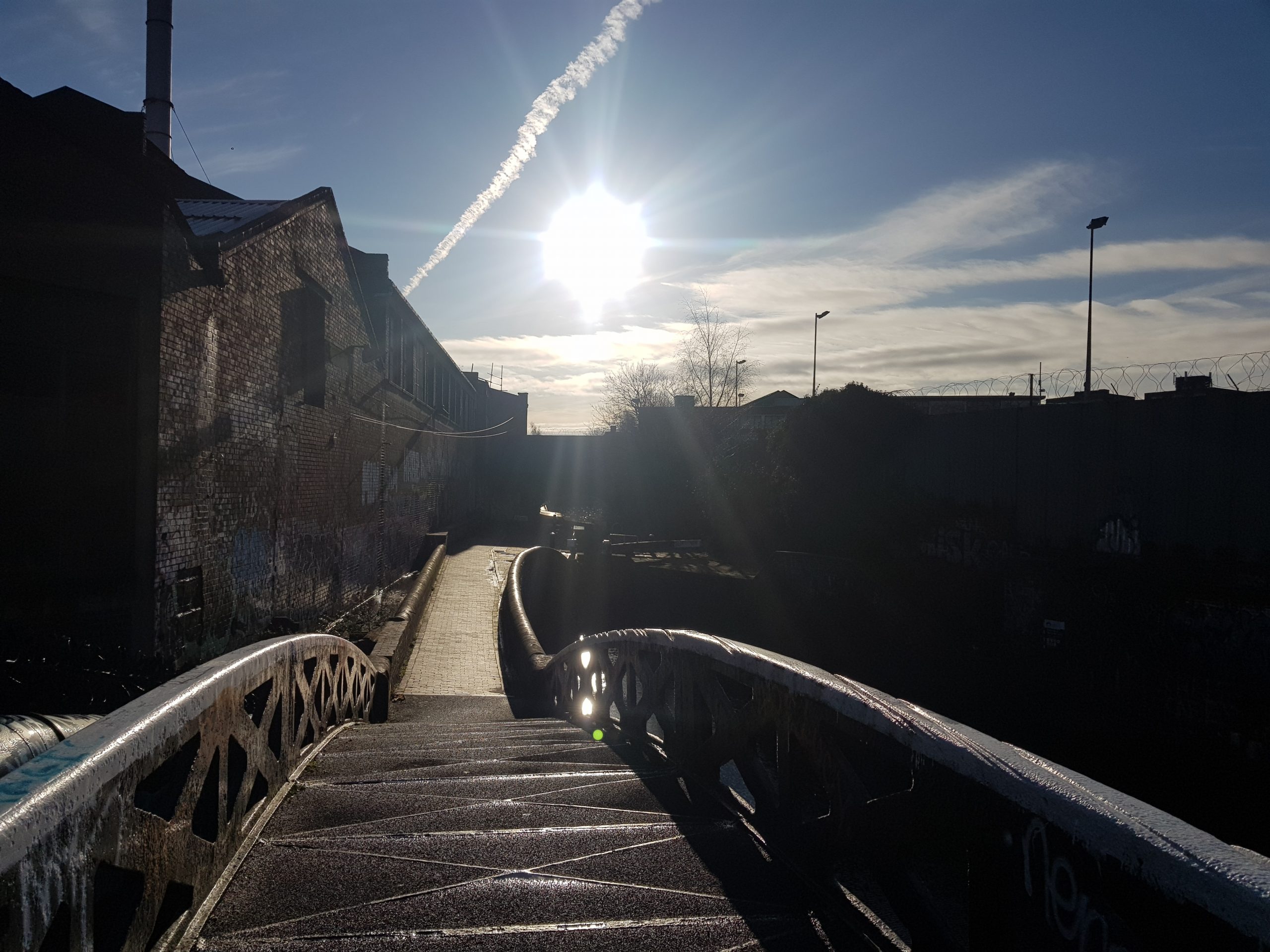Birmingham – Back to Backs National Trust Property
All the previous times that I’ve stumbled my way into Birmingham, I’ve promptly remembered that I should have booked in advance to visit this National Trust property, the ‘Backs to Backs’. It requires some forward planning, and in a bid to surprise and delight myself, I actually managed last week to book to visit this week. I’m a National Trust member as I aspire to be at least lower middle class, although I sometimes wonder whether I shall reach such pinnacles of sophistication any time soon. Anyway, this tour is one of the best rated in the city and it’s one of the best reviewed National Trust sites in the country. I’m very slightly nervous to write that I didn’t feel entirely engaged with proceedings, but that feels a rather pompous thing to say given the keen and generous volunteers who support this venue. I had better fall back on Jay Rayner’s line of “if someone wants to call me pompous or condescending, they can go right ahead” here…..
I can’t illustrate this riveting post with many photographs as they were banned inside the buildings, although that seemed to be the policy of the guide today rather than a general policy. Having noted that, our tour was quite busy and it’s not an unreasonable request from the guide. The tour is ninety minutes long, which did rather stretch my interest somewhat. I have to add a rider here that I’m generally boring, I read everything possible in museums, spend hours in them and frequently find myself on Google searching something new that I’ve learned during my meanderings. There was a lot of entering rooms, which in the case of the residences, were full of items that weren’t original to the properties, then listening to stories from other people on the tour about their mangles from the 1950s. Now, I have no complaint here, this is exactly the visitor that the National Trust gets and it’s the engagement that they want. I’m a life member of the National Trust (I drop that in for the reasons mentioned earlier about being aspirational), it would be ridiculous for me to be disappointed at that and it was rather pleasant to be by far the youngest on the tour. I like being the youngest, so a special award to the National Trust here for arranging this for me and also for the other tour participants for sharing their stories of how they had baths in tins around 70 years ago. One of the beauties of the tours is that over half the attendees stated that they had been brought up in houses similar to these, so of course they wanted to share their memories.
I’ll have to phrase this carefully, but I haven’t quite reached the higher levels of being ‘woke’ yet, but the tour guide did meander into discussion areas, shall we say, that the National Trust themselves might not have been entirely happy with. It’s too easy to be critical, but I suspect there’s quite a difference in style between the different tour guides, so experiences will likely differ. Anyway, back to the very many positives and that was the enthusiasm of the guide, but there was also one standout room which was on the top floor and was left in an unrestored condition. This clever idea showed more architectural history, which is very much my thing, such as the divide which was put in during the nineteenth century when the house was split, the staircase that was added and the layers of paint on the walls. I thought, just for my interest levels, that most of the other rooms were a little over-restored and stripped of some of their architectural relevance, although one room did contain an interesting photo of how it looked before restoration. I would have quite liked that to have been the case for all of the rooms, just to see how they ended up before they were tidied up. There were a few original traces though, such as stencilling on the walls and some original wallpaper.
Photos of the toilets were permitted. Here’s an early toilet before sanitation was added, they were only connected to the sewerage network in the early twentieth century and none of the properties ever had bathrooms fitted.
I’m pleased that I went on this tour, not least because more urban sites such as these are exactly what the National Trust need to reach out to a new audience. The story of working class people is often overlooked and the National Trust of course inevitably have to focus on their country houses. They’ve ensured that these properties survive, some of the very few ‘back to back’ houses to still be standing, so they tell an important story. I also understand why the National Trust have restored the rooms to three different periods of history and they’ve certainly spent a lot of money making these structures accessible to visitors. The awkward nature of the buildings is why they can’t easily allow visitors to walk around on their own, although they’ve got a lot of space that’s closed off at the moment (they were holiday lets for a long time, but it seems they closed during Covid) and there’s no access to any of the cellars. The old sweet shop on the corner has also closed, although has been turned into a little waiting area for visitors.
Being pre-prepared, I had read the visitor guide book in advance of my visit, and that is very well written and provides the sort of architectural information that I was interested in. As an observation rather than as a complaint, there were numerous slight inconsistencies with the guide book and the tour guide, the former notes that, unusually, there was a gas lamp in the courtyard that ensured it wasn’t dreary, whereas the tour guide mentioned that there was minimal light entering the properties. The guide book says that there were four toilets, the guide said that there were three, the guide book says that this wasn’t a Jewish court, the tour guide said it was. It’s all minor, but I sort of like a little bit of accuracy in the story telling and so I did rather glazed over some of the guide’s little facts that seemed quite odd to me. It’s thought that there were over 500 different families who lived in the houses during their 200 years of occupancy, although the National Trust have strongly focused on three families and that’s what the guide spoke about.
The guide book goes into plenty of detail about the slum clearances and the almost random nature of why these properties weren’t demolished in the 1960s. It appears that it’s simply because the ground floors were being used as shops and the council never quite got around to demolishing them. They were listed in the 1980s and then thanks to funding from the Heritage Lottery Fund and the European Regional Development Fund they were saved and then placed in the hands of the National Trust.
This is a fascinating location to visit for anyone and I’d merrily recommend it, it’s a piece of history that could have easily been lost. There isn’t actually anything particularly special about these houses and their yard in terms of saving them, it’s just that they represent where tens of thousands of people once lived. Many former residents of yards such as this were never that impressed about the tower blocks that they were moved to, but the survival of these units is a credit to the National Trust and those who funded their restoration, including many members of the public who sent their own donations in to help. The volunteers are doing a marvellous job in their story telling and it’s clear that their efforts are resonating positively with the vast majority of visitors. So, they don’t really need to change anything, although speaking just personally, there was a bit too much social history here for me and not enough architectural and building history. But, different things for different people and it’s clear that the National Trust have got the balance right judging by the reviews. All rather lovely and it’s just over £10 for the tour, or free for National Trust members. They don’t advertise it, but apparently it’s always worth wandering in when the tours are meant to start just in case they have any no shows.





